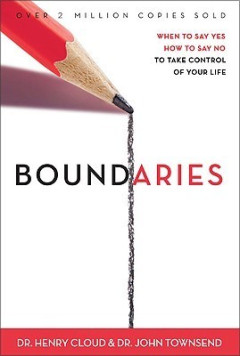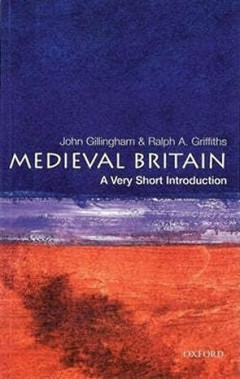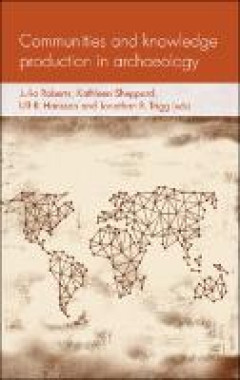Ditapis dengan
Filosofi Teras : Filsafat Yunani-Romawi Kuno untuk Mental Tangguh Masa Kini (HC)
Lebih dari 2000 tahun lalu, sebuah mazhab filsafat menemukan akar masalah dan juga solusi dari banyak emosi negatif. Stoisisme atau Filosofi Teras adalah filsafat Yunani-Romawi kuno yang bisa membantu kita mengatasi emosi negatif dan menghasilkan mental yang tangguh dalam menghadapi naik turunnya kehidupan. Jauh dari kesan filsafat sebagai topik berat dan mengawang-awang, Filosofi Teras justru …
- Edisi
- -
- ISBN/ISSN
- 9786233469319
- Deskripsi Fisik
- illust, xxviii + 352 hlm; 14 x 21 cm
- Judul Seri
- -
- No. Panggil
- 171 MAN f
Kepemimpinan Rohani
Berdasarkan pengalaman kepemimpinan mereka yang luas maupun berdasarkan pelayanan mereka kepada para pemimpin dari berbagai lingkup kehidupan, Henry dan Richard menawarkan nasihat yang penuh pengertian mendalam tentang cara-cara Allah mengembangkan, memimpin, dan memberi kuasa kepada para pemimpin rohani. Bimbingan yang jelas diberikan tentang bagaimana para pemimpin dapat memberi dampak positi…
- Edisi
- -
- ISBN/ISSN
- -
- Deskripsi Fisik
- 413 hlm; 15.5 x 24 cm
- Judul Seri
- -
- No. Panggil
- 262 BLA k
E-book State Institutions, Civic Associations, and Identity Demands
Southeast Asia has been home to some of the world’s bloodiest separatist conflicts. Myanmar alone has the most simultaneous ongoing civil wars; it also has the longest ongoing conflict between the Karen National Libera-tion Army (KNLA) and the Myanmar government. Beyond Myanmar, in other parts of the region, violent ethnoregional movements continue to rage, from Western Papua (I…
- Edisi
- -
- ISBN/ISSN
- 9780472903412
- Deskripsi Fisik
- 317 hlm
- Judul Seri
- -
- No. Panggil
- 303.6 HAL s
E-book Seabirds in the North-East Atlantic : Climate Change Vulnerability and…
This resource is part of a series produced by the Zoological Society of London and the University of Cambridge, which aims to (1) assess seabirds’ vulnerability to climate change in the North-East Atlantic, and (2) identify potential conservation actions that could reduce this vulnerability. This guidance collates information fromthe scientifc literature, non-governmental organisations’ …
- Edisi
- -
- ISBN/ISSN
- 9781805110132
- Deskripsi Fisik
- 279 hlm
- Judul Seri
- -
- No. Panggil
- 598 HAK s

E-book Boundaries: When to Say Yes, How to Say No to Take Control of Your Life
Having clear boundaries is essential to a healthy, balanced lifestyle. A boundary is a personal property line that marks those things for which we are responsible. In other words, boundaries define who we are and who we are not. Boundaries impact all areas of our lives: Physical boundaries help us determine who may touch us and under what circumstances -- Mental boundaries give us the freedom t…
- Edisi
- -
- ISBN/ISSN
- 9780310243750
- Deskripsi Fisik
- 357 halaman
- Judul Seri
- -
- No. Panggil
- 102 CLO b

E-book The Cold War: A Post-Cold War History, Third Edition
Thoroughly updated in light of new scholarship, including revised sections on President Nixon’s policies in Vietnam and President Reagan’s approach to U.S.-Soviet relations Features six all new "counterparts" sections that juxtapose important historical figures to illustrate the contrasting viewpoints that characterized the Cold War Argues that the success of Western capitalism during th…
- Edisi
- -
- ISBN/ISSN
- 9781118848401
- Deskripsi Fisik
- 298 halaman
- Judul Seri
- -
- No. Panggil
- 940.54 LEV t

E-book Medieval Britain: A Very Short Introduction
A comprehensive and authoritative short guide, this Very Short Introduction to Medieval Britain covers the establishment of the Anglo-Norman monarchy in the early Middle Ages, through to England's failure to dominate the British Isles and France in the later Middle Ages. Out of the turbulence came stronger senses of identity in Scotland, Wales, and Ireland. Yet this was an age, too, of growing …
- Edisi
- -
- ISBN/ISSN
- 019285402X
- Deskripsi Fisik
- 194 halaman, ilus.
- Judul Seri
- -
- No. Panggil
- 936 GILL m
E-book Stable Isotopes in Tree Rings : Inferring Physiological, Climatic and …
This Open Access volume highlights how tree ring stable isotopes have been used to address a range of environmental issues from paleoclimatology to forest management, and anthropogenic impacts on forest growth. It will further evaluate weaknesses and strengths of isotope applications in tree rings. In contrast to older tree ring studies, which predominantly applied a pure statistical approach t…
- Edisi
- -
- ISBN/ISSN
- 9783030926984
- Deskripsi Fisik
- 775 hlm
- Judul Seri
- -
- No. Panggil
- 634.92 ALL s
E-book Double-Sided Antler and Bone Combs in Late Roman Britain
Double-Sided Antler and Bone Combs in Late Roman Britain offers the first detailed study and catalogue of a comb type that represents a new technology introduced into Britain towards the end of the 4th century AD and a major signifier of the late fourth- to fifth-century transition. Their end-plates were worked into a variety of decorative profiles, some clearly zoomorphic. Over time this decor…
- Edisi
- -
- ISBN/ISSN
- 9781803276458
- Deskripsi Fisik
- 148 halaman, ilus.
- Judul Seri
- -
- No. Panggil
- 930.1 CRU d

E-Book Communities and Knowledge Production in Archaeology
The dynamic processes of knowledge production in archaeology and elsewhere in the humanities and social sciences are increasingly viewed as the collaborative effort of groups, clusters and communities of researchers rather than the isolated work of so-called ‘instrumental’ actors. Shifting focus from the individual scholar to the wider social contexts of her work and the dynamic creative pr…
- Edisi
- -
- ISBN/ISSN
- 9781526134561
- Deskripsi Fisik
- 269 halaman
- Judul Seri
- -
- No. Panggil
- 930.1 ROB c
E-book The Potrait of a Lady
Trying to recover here, for recognition, the germ of my idea, I see that it must have consisted not at all in any conceit of a "plot", nefarious name, in any flash, upon the fancy, of a set of relations, or in any one of those situations that, by a logic of their own, immediately fall, for the fabulist, into movement into a march or a rush, a patter of quick steps; but altogether in the sense o…
- Edisi
- -
- ISBN/ISSN
- 9780141439631
- Deskripsi Fisik
- 409 hlm
- Judul Seri
- -
- No. Panggil
- 823 JAM t
E-book The History of Southern Africa
Archaeological findings have indicated that Southern Africa is the land from which humankind’s ancestors evolved, between 3 million and 1 million years ago. Indeed, it is probable that the indigenous San, Pygmy, and Khoekhoe peoples of Southern Africa are linked genetically to that earlier, ancient population. Little, if anything, is known about interaction among these particular early group…
- Edisi
- -
- ISBN/ISSN
- 9781615303984
- Deskripsi Fisik
- 240 hlm
- Judul Seri
- -
- No. Panggil
- 968 MCK t
E-book Basic Keelboat : The National Standard for Quality Sailing Instruction
Sails are boat's engine and they produce power in one of two ways. When the wind is coming from the side of the boat, it flows around both sides of the sail (like an airplane wing), creating lift which "puls" the boat forward. When the wind is coming form behind the boat, it "pushes" against the sail and simply shoves the boat forward.
- Edisi
- -
- ISBN/ISSN
- 1882502213
- Deskripsi Fisik
- 93 hlm
- Judul Seri
- -
- No. Panggil
- 623.88 HEN b
E-book The Craft of Poetry : Dialogues on Minimal Interpretation
As we gradually saw, there is more to the dialogue form of our expositions than we initially realized – something new, perhaps, in poetry criticism; we could call it dialogical poetics. We are accustomed to seeing all extended commentary on poetry as the vision of some individual consciousness – the more individual and “original,” the better. There is almost always a significant degree …
- Edisi
- -
- ISBN/ISSN
- 9781315724980
- Deskripsi Fisik
- 175 hlm
- Judul Seri
- -
- No. Panggil
- 821 ATT t

E-Book The Secret Book of Flora Lea
In the war-torn London of 1939, fourteen-year-old Hazel and five-year-old Flora are evacuated to a rural village to escape the horrors of the Second World War. Living with the kind Bridie Aberdeen and her teenage son, Harry, in a charming stone cottage along the River Thames, Hazel fills their days with walks and games to distract her young sister, including one that she creates for her sister …
- Edisi
- -
- ISBN/ISSN
- 9781668011836
- Deskripsi Fisik
- 368 halaman
- Judul Seri
- -
- No. Panggil
- 823 HEN t
The Alpha Girl's Guide : Menjadi Cewek Smart, Independen, dan Anti-Galau
Alpha Female adalah para perempuan yang menginspirasi, memimpin, menggerakkan orang sekitarnya, dan membawa perubahan. Mereka cerdas, percaya diri, dan independen. Bagaimana remaja dan perempuan muda bisa mengembangkan diri menjadi mereka? The Alpha Girl's Guide akan membahas tip-tipnya, seperti: Mana yang lebih penting, nilai atau pengalaman berorganisasi? Apakah teman kamu teman sejati ata…
- Edisi
- -
- ISBN/ISSN
- 9789797809546
- Deskripsi Fisik
- xvi + 264 hlm; 13 x 19 cm
- Judul Seri
- -
- No. Panggil
- 155.25 MAN t
E-book Social Theory after the Internet : Media, Technology and Globalization
Digital media have been responsible for some of the most wide-ranging changes in society over the past quarter-century. At the same time, there is little agreement in the social sciences about how these changes should be understood. One reason is increasing disciplinary specialization. For example, media and communication studies concentrates on specific areas such as the news or influe…
- Edisi
- -
- ISBN/ISSN
- 9781787351226
- Deskripsi Fisik
- 210 hlm
- Judul Seri
- -
- No. Panggil
- 303.4 SCH s
E-book The Web as History : Using Web Archives to Understand the Past and the…
The web has been with us for more than a quarter of a century. It has become a daily and ubiquitous source of information in many peoples’ lives around the globe. But what does it tell us about historical and social change? For a researcher in the twenty-second century, it will seem unimaginable that someone studying the twenty-first c…
- Edisi
- -
- ISBN/ISSN
- 9781911307563
- Deskripsi Fisik
- 298 hlm
- Judul Seri
- -
- No. Panggil
- 025.042 ACK t
E-book The Alpha Girl's Guide
The Alpha Girl’s Guide akan membahas tip-tipnya, seperti: Mana yang lebih penting, nilai atau pengalaman berorganisasi? Apakah teman kamu teman sejati atau teman yang menghambat? Bagaimana mengetahui cowok parasit dan manipulatif? Bagaimana bersikap saat patah hati? Apakah kamu akan menikah untuk alasan yang tepat? Apa yang penting dilakukan saat memulai bekerja? Buku ini adalah hasil pengam…
- Edisi
- -
- ISBN/ISSN
- 9797808483
- Deskripsi Fisik
- -
- Judul Seri
- -
- No. Panggil
- 158.1 MAN t
E-book Black rock : A tale of the selkirks
It was due to a mysterious dispensation of Providence, and a good deal to Leslie Graeme, that I found myself in the heart of the Selkirks for my Christmas Eve as the year 1882 was dying. It had been my plan to spend my Christmas far away in Toronto, with such Bohemian and boon companions as could be found in that cosmopolitan and kindly city. But Leslie Graeme changed all that, for, disco…
- Edisi
- -
- ISBN/ISSN
- -
- Deskripsi Fisik
- 271 hlm; 0.4 mb
- Judul Seri
- -
- No. Panggil
- 823 CON b
E-book The army of the cumberland
In Kentucky, during the spring of 1861, every shade of opinion prevailed, from the most pronounced Union sentiment to the most ultra secession sympathy. The Government at Washington wished to enlist Kentucky heartily in support of the Union, while every effort was made by the rebel leaders to secure the secession of the State from the Union, and to have it join its fortunes to those of th…
- Edisi
- -
- ISBN/ISSN
- -
- Deskripsi Fisik
- 310 hlm; 0.6 mb
- Judul Seri
- -
- No. Panggil
- 823 CIS t
E-book The blue flower
The parents were abed and sleeping. The clock on the wall ticked loudly and lazily, as if it had time to spare. Outside the rattling windows there was a restless, whispering wind. The room grew light, and dark, and wondrous light again, as the moon played hide-and-seek through the clouds. The boy, wide-awake and quiet in his bed, was thinking of the Stranger and his stories. "It was not …
- Edisi
- -
- ISBN/ISSN
- -
- Deskripsi Fisik
- 240 hlm; 0.4 mb
- Judul Seri
- -
- No. Panggil
- 823 DYK t
E-book Young hunters of the lake
The boys lived in the town of Fairview, a country place, located on the Rocky River, about ten miles above a fine sheet of water called Lake Cameron. The town boasted of a score of stores, several churches, a hotel, and a neat railroad station at which, during the summer months, as high as ten trains stopped daily. On the outskirts of the town were a saw mill, a barrel factory, and several …
- Edisi
- -
- ISBN/ISSN
- -
- Deskripsi Fisik
- 277 hlm; 0.4 mb
- Judul Seri
- -
- No. Panggil
- 823 BON y
E-book The lilac girl
Two men were sitting beside a camp-fire at Saddle Pass, a shallow notch in the lower end of the Sangre de Cristo Range in southern Colorado. Although it was the middle of June and summer had come to the valleys below, up here in the mountains the evenings were still chill, and the warmth of the crackling fire felt grateful to tired bodies. Daylight yet held, although it was fast deepening t…
- Edisi
- -
- ISBN/ISSN
- -
- Deskripsi Fisik
- 190 hlm; 0.3 mb
- Judul Seri
- -
- No. Panggil
- 823 BAR t

Kamus akuntansi.
Judul asli : Dictionary of accounting
- Edisi
- Edisi kedua
- ISBN/ISSN
- -
- Deskripsi Fisik
- 161 hlm. ;15x23 cm.
- Judul Seri
- -
- No. Panggil
- 657.03 EST k

Kimia dasar : Prinsip dan terapan modern
- Edisi
- -
- ISBN/ISSN
- -
- Deskripsi Fisik
- -
- Judul Seri
- -
- No. Panggil
- 540 PET k
- Edisi
- -
- ISBN/ISSN
- -
- Deskripsi Fisik
- -
- Judul Seri
- -
- No. Panggil
- 540 PET k

Perkembangan dan kepribadian anak
- Edisi
- cet. 1
- ISBN/ISSN
- 13-00-019-5
- Deskripsi Fisik
- 239 hlm; ind;17 x 25 cm
- Judul Seri
- -
- No. Panggil
- 155.4 MUS p
- Edisi
- cet. 1
- ISBN/ISSN
- 13-00-019-5
- Deskripsi Fisik
- 239 hlm; ind;17 x 25 cm
- Judul Seri
- -
- No. Panggil
- 155.4 MUS p

Konseling dan psikoterapi anak : Panduan lengkap memahami karakter, perasaan,…
Apakah anak saya normal? Setiap orangtua tentu pernah mempertanyakan kekhawatiran tersebut dan bisa jadi Anda adalah salah satnya. Sudah saatnya Anda membuang kekhawatiran tersebut jauh-jauh, karena Anda bisa menemani pertumbuhan dan perkembangan buah hati Anda denan penuh ketenangan. Buku Konseling dan Psikoterapi Anak yang ditulis oleh salah satu ahli kesehatan mental anak terbaik di Amerika …
- Edisi
- cet. 1
- ISBN/ISSN
- 979-15555-09-5
- Deskripsi Fisik
- 404 hlm. 14 x 20 cm
- Judul Seri
- -
- No. Panggil
- 158.3 PAU k

Ensiklopedia Grolier - Ilmu pengetahuan populer 4 : Ilmu pengetahuan lingkung…
ILMU PENGETAHUAN TENTANG LINGKUNGAN ( Halaman 1-108) Apakah bumi akan merupakan tempat tinggal yang cocok bagi generasi yang akan datang? Pada bagian ini kita akan menyelidiki jenis tanaman, hewan terancam punah, dan rimba raya yang dilindungi, tentang lingkungan mulai dari sumber daya alam bumi-air, hutan, mineral, sampai industri, pertanian, transportasi, dan kegiatan lainnya. ILMU KIMIA…
- Edisi
- cet. 2
- ISBN/ISSN
- -
- Deskripsi Fisik
- 305 hlm.; illus. 21 x 27 cm
- Judul Seri
- -
- No. Panggil
- 503 LAR e

PENGAJARAN TATA BAHASA KASUS
- Edisi
- -
- ISBN/ISSN
- 979-404-485-7
- Deskripsi Fisik
- xi.;135hlm;14.5x21cm
- Judul Seri
- -
- No. Panggil
- 415 TAR p
- Edisi
- -
- ISBN/ISSN
- 979-404-485-7
- Deskripsi Fisik
- xi.;135hlm;14.5x21cm
- Judul Seri
- -
- No. Panggil
- 415 TAR p

MEMBACA: Sebagai suatu keterampilan berbahasa
- Edisi
- cet. 10
- ISBN/ISSN
- 979-404-123-8
- Deskripsi Fisik
- vii.;145hlm;14.5x21cm
- Judul Seri
- -
- No. Panggil
- 408.4 TAR m
- Edisi
- cet. 10
- ISBN/ISSN
- 979-404-123-8
- Deskripsi Fisik
- vii.;145hlm;14.5x21cm
- Judul Seri
- -
- No. Panggil
- 408.4 TAR m

MEMBACA SEBAGAI SUATU KETERAMPILAN BERBAHASA
- Edisi
- cet. 4
- ISBN/ISSN
- 979-404-123-8
- Deskripsi Fisik
- vii; 147 hlm;21 x 14,5 cm
- Judul Seri
- -
- No. Panggil
- 408.4 TAR m
- Edisi
- cet. 4
- ISBN/ISSN
- 979-404-123-8
- Deskripsi Fisik
- vii; 147 hlm;21 x 14,5 cm
- Judul Seri
- -
- No. Panggil
- 408.4 TAR m

PRINSIP-PRINSIP DASAR SASTRA
- Edisi
- cet. 3
- ISBN/ISSN
- 979-404-162-9
- Deskripsi Fisik
- viii; 248 hlm;14,5 x 21 cm
- Judul Seri
- -
- No. Panggil
- 801 TAR p
- Edisi
- cet. 3
- ISBN/ISSN
- 979-404-162-9
- Deskripsi Fisik
- viii; 248 hlm;14,5 x 21 cm
- Judul Seri
- -
- No. Panggil
- 801 TAR p

BERBICARA SEBAGAI SUATU KETERAMPILAN BERBAHASA
- Edisi
- cet. 5
- ISBN/ISSN
- 979-404-122-X
- Deskripsi Fisik
- vii; 114 hlm;21 x 14,5 cm
- Judul Seri
- -
- No. Panggil
- 400.14 TAR b
- Edisi
- cet. 5
- ISBN/ISSN
- 979-404-122-X
- Deskripsi Fisik
- vii; 114 hlm;21 x 14,5 cm
- Judul Seri
- -
- No. Panggil
- 400.14 TAR b
 Karya Umum
Karya Umum  Filsafat
Filsafat  Agama
Agama  Ilmu-ilmu Sosial
Ilmu-ilmu Sosial  Bahasa
Bahasa  Ilmu-ilmu Murni
Ilmu-ilmu Murni  Ilmu-ilmu Terapan
Ilmu-ilmu Terapan  Kesenian, Hiburan, dan Olahraga
Kesenian, Hiburan, dan Olahraga  Kesusastraan
Kesusastraan  Geografi dan Sejarah
Geografi dan Sejarah